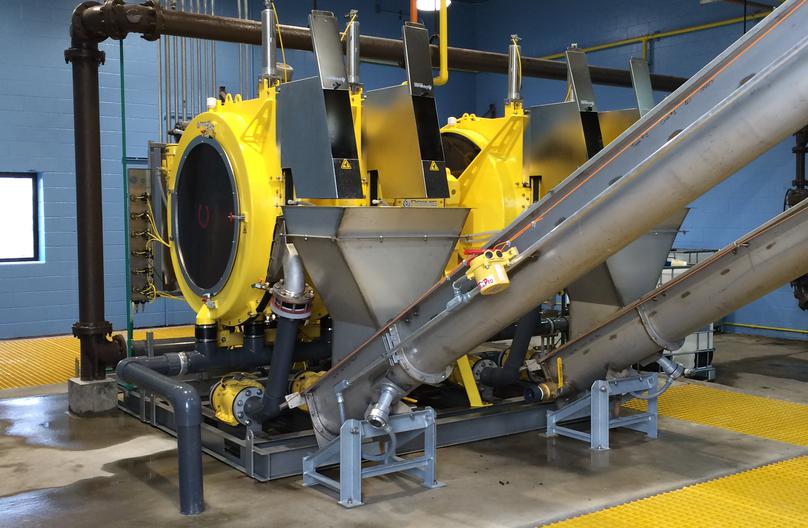The City of Madisonville's original sludge dewatering system consisted of two traditional belt filter presses (BFP's) which were placed into service in 1996 when the WWTP was originally constructed. The BFP's struggled to obtain a 16-17% dewatered cake from a feed solid of 2%. A new quad channel 48Q Rotary Fan Press 2.0 was installed in March 2015, to replace the original belt presses. The new innovative press will process up to 120 gallons per minute (gpm) through its four 48 inch channels. At the time of installation, the 48Q RFP was the largest municipal unit manufactured to date. The design features and specifications of the new fan press include:
- Skid mounted, pre-wired and pre-piped.
- Horizontal and incline conveyors for transportation of the dewatered cake solids.
- Existing sludge feed pumps, polymer system, and air compressors were adaptable to the new press, and were
- re-connected to the new system.
- A PLC based control panel was used to operate the rotary fan press, along with a variable frequency drive for the press drive motor.
- The control panel of the system was linked to the existing plants software, to allow monitoring and controlling of the fan press.
- All existing controls associated with the polymer system, sludge feed pumps, and water booster pumps were linked to the new control panel allowing monitoring from one main system.
- The existing power distribution system was modified to the requirements of the new system including branch circuit wiring, new feeders, and control cabling in new corrosion-resistant raceways.
A life-cycle cost study was done prior to design of the project. With a 21-22% dewatered cake, the water weight saved, plus the reduced maintenance projected an 8-year payback for the project. The City is now hauling their sludge in-house and has also eliminated the need for full time supervision of the press. Washwater use is eliminated, noise levels are reduced, odor levels are reduced, and the same building which once housed the BFP's is capable of being kept clean while efficiently dewatering the identical feed sludge as before.


















